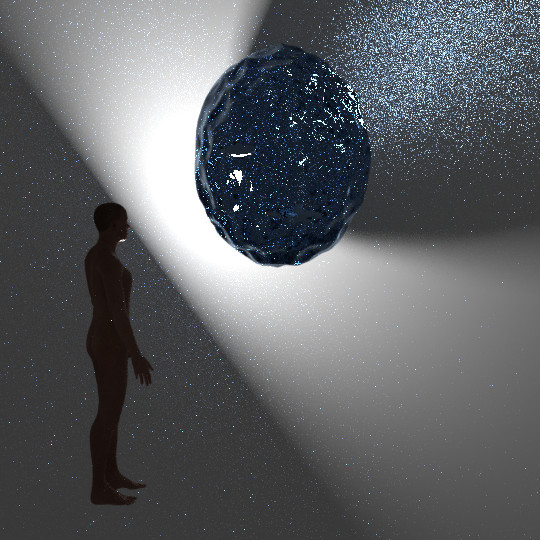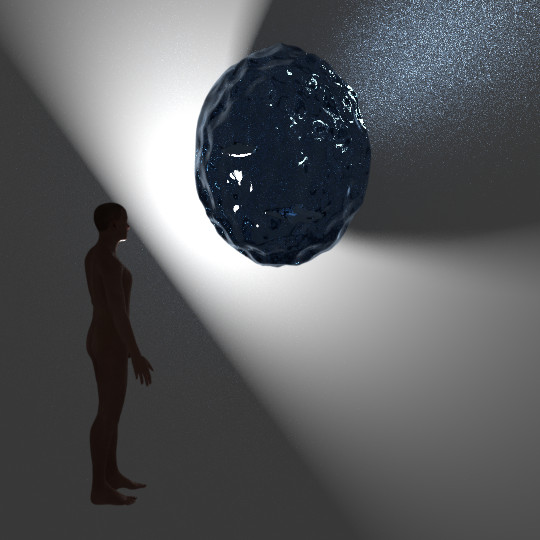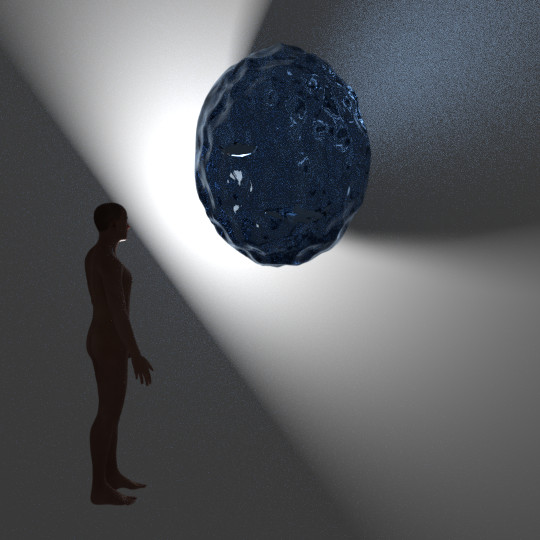Hi, generally cycles renders are much better than when it first came out but I have found that there is still scope for a bit of de-speckling. i.e. These renders are a) 512 samples b) 64 samples c) 7 frames at 64 samples averaged with the furthest pixels from the mean excluded. The code is relatively simple (though numpy is never very transparent) and included at the bottom.
I have tried running this from inside blender and find that the range of pixel values is much reduced, maybe I’m not getting hold of the render results correctly. Also it’s not ideal having blender freeze for a long time with no indication as to the process having crashed or not! Any help gratefully received.
a)
b)
c)
python script
#!/usr/bin/env python
import numpy as np
from PIL import Image
import os
''' In blender you need to use the animation render to produce a series
of images of the same scene, say 5 or 7. NB you must click on the little
clock next to Sampling:Settings:seed to ensure that all images have different
fireflies.
Then run this file in the same directory after changing the variable FILE
below to match the stem of the file name you specified when rendering in
blender
'''
FILE = 'pic' # stem of file used in blender render, will be saved as pic0001.png
L = [0.2989, 0.5870, 0.1140, 0.0] # standard weight for luminance
rndr = None
f_list = [f for f in os.listdir() if FILE+'00' in f] # assume less than 100 files, practically will always be less than 10
n = len(f_list)
for i, f in enumerate(f_list):
im = Image.open(f)
if rndr is None: # first one - create render array to hold all images
w, h = im.height, im.width
rndr = np.zeros((n, h, w, 4), dtype=np.float)
rndr[i] = np.array(im)
lum = (rndr * L).sum(axis=3)
lum = np.abs(lum - lum.mean(axis=0)) # absolute distance from mean
ww, hh = np.meshgrid(np.arange(0, h), np.arange(0, w)) # make index vals for 2nd and 3rd axes
sel = np.argsort(lum, axis=0) # sort along first axis
final = ((rndr.sum(axis=0) - rndr[sel[n - 1], hh, ww]) / (n - 1)).astype(np.uint8) # subtract pixel furthest from mean
Image.fromarray(final).save('{}_final.png'.format(FILE)) # save image
and this is the blender attempt (but not with the full functionality of the above - I gave up after a while)
import bpy
import numpy as np
import sys # resorted to using PIL to check at what stage pixel qual deteriorates
sys.path.insert(1, '/usr/lib/python3/dist-packages')
from PIL import Image
N = 3
scene = bpy.context.scene # short cut to increase brevity
scene.use_nodes = True
tree = scene.node_tree
links = tree.links
for n in tree.nodes:
tree.nodes.remove(n)
rl = tree.nodes.new('CompositorNodeRLayers')
rl.location = 185,285
v = tree.nodes.new('CompositorNodeViewer')
v.location = (750, 210)
v.use_alpha = False
links.new(rl.outputs[0], v.inputs[0])
c = tree.nodes.new('CompositorNodeComposite')
links.new(rl.outputs[0], c.inputs[0])
bpy.data.images['Viewer Node'].colorspace_settings.name = 'sRGB'
scene.render.resolution_percentage = 100 # to avoid rounding error with w, h
w = scene.render.resolution_x
h = scene.render.resolution_y
rndr = np.zeros((N, h, w, 4), dtype=np.float)
# do three renders into rndr
for i in range(N):
scene.cycles.seed = i # different 'noise' each time
bpy.ops.render.render()
rndr[i] = np.array(bpy.data.images['Viewer Node'].pixels
).reshape(h, w, 4)
# use luminance
L = [0.2989, 0.5870, 0.1140] # luminance RGB factors
lum = (rndr[:,:,:,:3] * L).sum(axis=3)
ww, hh = np.meshgrid(np.arange(0, h), np.arange(0, w)) # make index vals for 2nd and 3rd axes
sel = np.argsort(lum, axis=0) # sort N along first axis
mid = int(N / 2) # if N is even this isn't official median
final = rndr[sel[mid], hh, ww] # use middle one
# even if I just save rndr[0] i.e. the first unaltered render it's lost image quality
Image.fromarray((final[::-1,:,:] * 255).astype(np.uint8)).save('/home/patrick/Downloads/Untitled Folder/scr_caps/addon_test/final5.png') # save image
# below non PIL original version
'''
# put pixels back in new image and save over file in render specs
im = bpy.data.images.new('Sprite', alpha=True, width=w, height=h)
im.colorspace_settings.name = 'sRGB'
im.use_alpha = True
im.alpha_mode = 'STRAIGHT'
im.filepath_raw = scene.render.filepath
im.file_format = 'PNG'
im.pixels = final.flatten() # put our median pixels into new image
im.save()
'''




